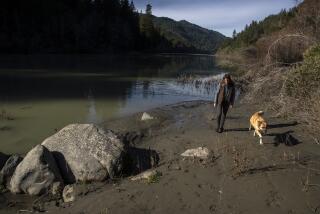Judge Clears Archeologists in Bone Exhumation Case
- Share via
INDIO — A Riverside County Municipal Court judge Thursday dismissed a criminal case against two archeologists, saying evidence was “wholly lacking” to support charges that they illegally exhumed a pound of human bone fragments.
Judge B.J. Bjork’s decision, which ended a three-day hearing in this desert town, was seen as a victory for the discipline and vindicated Riverside County archeologist David Van Horn, the principal defendant.
The case was referred to the Riverside County district attorney by the attorney general in July, 1989, about two months after Van Horn’s employee, Robert Scott White, excavated what turned out to be pieces of human bone from a vacant lot they were surveying in Indian Wells.
Instead of immediately notifying the county coroner, who in turn would have informed Indian officials, they sent the fragments to UCLA for analysis. Once confirmed as human, Van Horn returned the bone and pottery fragments to the landowner--a developer who had hired him to survey the site before construction.
State laws protect American Indian graves from excavation as well as vandalism, and require that Indians be consulted when human remains or grave artifacts are unearthed.
Deputy Atty. Gen. Manuel Medeiros, who prompted the criminal case, said he had no problem with Bjork’s decision.
“If the evidence isn’t there, it isn’t there,” he said.
Van Horn, 46, who has a doctorate from the University of Pennsylvania, said his defense cost $15,000. He also blamed the case for the loss of at least one contract.
The case, which experts said marked an unprecedented use of criminal “grave robbing” charges against professional archeologists, centered on whether Van Horn and White should have known the bone chips were human and immediately contacted the coroner.
An archeologist who testified for the prosecution said reports Van Horn had received documenting two cremation sites within a mile of his dig should have been clue enough that the remains were possibly human.
Four experts for the defense said it is almost impossible to identify such small specimens in the field. They also said Van Horn was correct in sending the material to UCLA for analysis.
More to Read
Sign up for Essential California
The most important California stories and recommendations in your inbox every morning.
You may occasionally receive promotional content from the Los Angeles Times.













